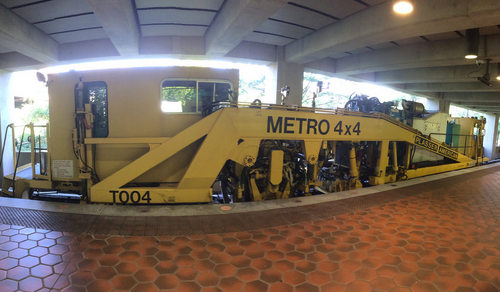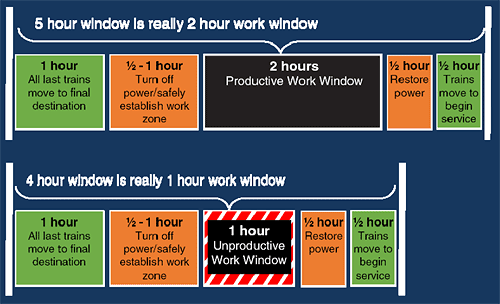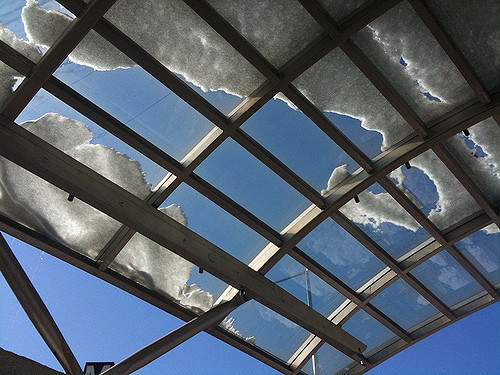Metro is being more transparent (and persuasive) about late-night closures… and weekend track work
After hearing strong opposition to his plans to cut late-night Metro service, WMATA General Manager Paul Wiedefeld and his team have been opening up about the system’s maintenance needs.
They’re making a strong case for why Metro needs a lot more downtime for track work — both at nights and through periodic weekend single-tracking and shutdowns, which will have to continue into the future.
Metro is now making the case for late night maintenance, and the reasons seem strong
I sat down with Wiedefeld, Andrew Off, WMATA’s Assistant General Manager for Transit Infrastructure and Engineering Services, and a few other Metro officials along with the Coalition for Smarter Growth for a briefing. Off will be presenting the same slides to the WMATA Board Thursday and recently showed them to Bob Thomson of the Washington Post as well.
Off went into details about the kinds of maintenance his team wants to do, like “cable meggering” (testing cables so they don’t catch fire) and “tamping” (smoothing out the ballast under the tracks to make the tracks more stable). You can read lots about this in his presentation.
To keep up with this maintenance requires bigger chunks of time. After the system officially closes, some trains are still taking passengers to the end of the line for up to another hour. It then can take an hour to drive the work trains from the yards (which are mostly near the ends of lines) to the work sites, shut off the power, and so forth.
Couple that with an hour on the other end to close up and get the equipment off the railroad, and a 4-hour overnight closed period only allows one hour for work. (Plus, Metro has to pay for an 8-hour shift for all the workers.)
And, Off argued, there’s just so much work to be done that Metro needs these windows every day. He also said they can’t do this work in “surges” like with SafeTrack, or close just one line at a time. On an average night, Metro may have 57 work crews and work on 164 of the system’s 234 miles. That’s a lot of maintenance, and more than can fit in a smaller, targeted shutdown, Off explained.
He added that the “surges” aren’t fixing everything. They’re just dealing with some issues, mostly on outdoor tracks, like deteriorated rail ties. The surges have not gone into the core and not covered the same kinds of maintenance that Off lists for the night shutdowns.
I don’t want to support any reduction in Metro service lightly. Still, if Off’s presentation is correct, it does seem that Metro needs this time. We all know the system is in bad shape and needs work. Limping along with fires and derailments is absolutely not an option.
When criticizing the initial late night plan, I focused on two issues: First, WMATA wasn’t explaining, in detail, why another alternative wouldn’t work. Second, there was no analysis available about adding “night owl” or other bus service to help people get around late at night without the rail system.
Off has begun; other people who know more about track maintenance than I should listen to the board meeting Thursday (the audio will be archived after the meeting as well) and put questions in the comments to this post. I’ll pass on the best ones to Wiedefeld, Off, and the others and try to get you answers.
WMATA doesn’t need to just convince me, or other activists; it needs to give engaged members of the riding public the information to be persuaded as well. This is a good start, but not the end.
Nights won’t be the only time for track work — keep expecting shutdowns and single tracking
Remember those great days of the mid-2000s, when Metro ran late at night, didn’t single-track on weekends, and was reliable? Those days are not coming back, unfortunately.
Hopefully the reliable part will come back. But Off made clear that the agency just wasn’t keeping up with its maintenance then. We were enjoying long hours of service while the then-shinier, newer tracks and circuits were gradually decaying right under us.
Off thinks Metro needs to do this amount of maintenance at nights forever. Further, and this is important to understand: late nights won’t be the only time for track work. Weekend single-tracking and shutdowns will continue as well.
There are two kinds of track work which we might colloquially call “maintenance,” explained Off and WMATA COO Joe Leader. The late night closures will permit what’s called “preventive maintenance.” There, track workers look for parts that are wearing down, coming disconnected, etc. and fix them. That work helps forestall most (but never all) track fires, bumps, and risks of derailments.
In addition, Metro needs to regularly replace aging equipment and sections of track, such as rail ties. (SafeTrack was mostly about replacing rail ties.) For that, Metro will need to occasionally take whole sections of track off-line for a weekend or more.
In the past, riders have often gotten the impression that if we just soldier through a few years of fixes, things will be “back to normal.” That was certainly the subtext of Richard Sarles’ Metro Forward efforts. It wasn’t said explicitly, but I’ve talked to many riders who thought that was also true of SafeTrack — that we’d have some pain for a year and then things would all be pretty much fixed again.
Things can get fixed, but the new normal won’t be the same as the old. SafeTrack is repairing and replacing some of the most critical systems that were causing the worst problems and posed safety risks, Leader said, but that still leaves all the other equipment that’s working okay but will need repair and replacement in the future. SafeTrack isn’t making Metro new, just (hopefully) taking it off life support.
Successive General Managers have been unwilling to speak the truth about the system’s needs. They’d paper over the problems, letting the maintenance picture grow worse and worse; they’d launch repair initiatives and make rosier pronouncements than were grounded in reality. Wiedefeld joked that he’s too old for that; he’s going to prescribe what he thinks Metro needs and not pretend it’ll be an easier task.
What should Metro do next?
If Metro does go forward with cutting late-night service, I’d like to see a strong commitment on these five points:
1. Be more open. This level of detail is much more compelling than the “trust us, we need 20 hours a week” we got before. In the past, WMATA has also been so afraid of bad press that many people in the agency didn’t want to admit how bad the problems were. Instead, the information came out anyway, but WMATA lost the public’s trust.
Metro officials need to abandon any mindset that information about the system’s operations might be too detailed for the public. Let riders decide how much they want to know, but help them know as much as possible. Surprises, cover-ups, etc. are worse than admitting to problems.
Also, we need transparency about the maintenance that’s done. I don’t think Off and his team will get the 20 hours a week of maintenance time and then just sit on it without doing much work, but the board and riders should be able to “trust, but verify.” Provide information for our wonkier transit followers about how many cables were meggered, how many still need to be, where, and when. Let people check for themselves that Metro is really using most of its work time effectively.
2. Deliver on safety. This is a no-brainer. The system has to get safer. Track fires and such won’t go away completely overnight (or ever — any transportation system will have occasional problems, though they should never be fatal or hazardous). But the system has to get to the point where safety overseers are confident it’s meeting the standards of a well-run transit system.
3. Deliver on reliability. Metro has been promising a lot of service but not always delivering on it. Travis Maiers has documented how Metro isn’t meeting its targets for trains at peak times. Off-peak, there are often longer waits than expected as well.
Wiedefeld promises that with more maintenance (and adequate funding), Metro can set a schedule it can keep. The agency needs to deliver on that.
This has sometimes been worst with weekend single-tracking. The agency says trains will come every 20 minutes or something, and then the gaps might be far larger. Single-tracking has made riding Metro on weekends extremely unappealing for anyone with an alternative (like a car). It doesn’t have to be that way, and Metro should ensure that its weekend track work doesn’t mean no schedule at all.
4. Maximize alternatives to rail. The train isn’t the only way to get around. Metro also operates a large bus network, and can and should identify ways to beef up late night service in the absence of rail. Its initial proposal was paltry at best, and it can do better.
When asking about this, I've heard answers from Metro officials like, “well, not that many people will ride these buses.” Even if the buses get light use, it's important to offer some option. If some kind of shared ride service can do it better and cheaper, that's fine, but still offer something. Late night service isn't cheap either, but it also brings significant job and tax benefits — the Downtown DC Business Improvement District estimated that late-night service cuts could hurt 2,000-4,000 jobs and cost up to $12 million a year in tax revenue.
Our region has grown housing, jobs, restaurants, and more near transit with the expectation that it would offer a way to get around nearly any time of day. We shouldn't abandon that if there's any alternative. If the rail system needs fixing, fix it, but provide other options.
5. Watch for that death spiral. Metro is in danger of a “death spiral” where riders leave, fare revenue declines, the budget shows a deficit, and the agency has to cut service which only drives even more riders away. Arguably, it's already about there.
Wiedefeld said to me that he thinks the bigger “death spiral” danger is about poor safety and reliability rather than service. He wants to ensure that Metro is safe and reliable.
The main risk, if Metro cuts back on service like late at night, is that it promises less AND still doesn't deliver. Then riders are worse off, the system is worse, and we've backed away from the region's commitment to transit service.
If more maintenance windows is what it'll take to get out of this hole, I'm willing to support Paul Wiedefeld, who certainly seems to be making a start at turning things around. Let's all help him succeed — and help hold the agency to its promises to do better.




